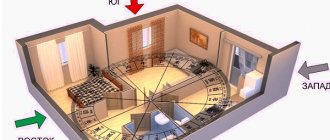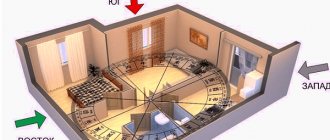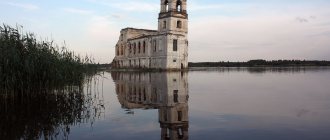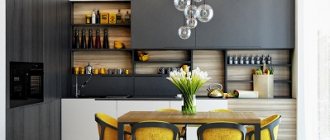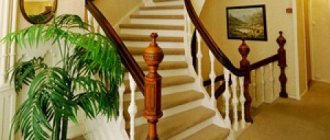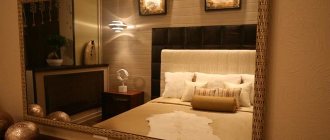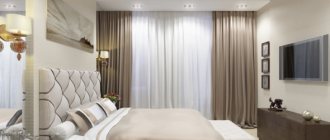Issues discussed in the material:
- Location of the house on the site according to the law
- Orientation of the house according to the cardinal directions
- Location of the house on the site taking into account insolation
- The location of the house on the site relative to other buildings
- The nuances of locating a house on a plot with a slope
- Location of the house on the site, taking into account communications
- 4 facts to consider when placing a house on a plot
The location of the house on the site depends not only on the wishes of the owner - it is necessary to take into account the restrictions imposed by law. The distance must be maintained not only from the territory and buildings of neighbors, but also between objects within the site.
In addition to legal requirements, other factors must be taken into account: plot size, elevation difference, insolation and much more. In our article we will talk about all the nuances that need to be taken into account when building a house.
Location of the house on the site according to the law
The location of the house on the site is regulated by law. Every land owner must be aware of all the restrictions that are influenced by various factors. For example, how to place water supply and sewerage pipes, what distance is permissible between electrical cables and pipelines in two areas and how many meters should be from one building to another, what is the distance from a residential building to the red line.
The red line is the boundary of streets and other public areas along the perimeter fence of your property.
The rules for locating a house on a plot are the same if it is built for permanent residence and as a summer house. The differences are that the owner of a residential building can register in it.
Sanitary and technical standards for the location of a house on a site
These requirements provide quite a lot of freedom of action. You can study them in SNiP 30-02-97, which describes the minimum distance between the house, outbuildings, fences, as well as bushes and trees.
This document contains information about how many meters there should be between buildings, and the distance depends on the building material from which they are made.
What other requirements are put forward:
- location of water supply and drainage pipes (SNiP 2.04.02-87, as well as SNiP 2.04.01-85);
- distance between electrical cables in areas located nearby (SNiP 2.07.01-89);
- sanitary rules (TSN-40-301-97);
- NPB (SNiP 21-01-97);
- the permissible plot size is at least 6 acres (SP11-106-9 7). It is important that the area of the building is no more than 30% of the size of the territory.
If the house is located in a specially protected area, additional requirements may be imposed, most often on the height of the building. For example, when there is an airport near the cottage. Restrictions may also apply to the front part of the house if it is recognized as a historically valuable object.
Carefully study all the features of the territory. Only after this can you make a plan for the location of the house on the site (by hand or online using a design program).
Distance to fence
How large the distance from a residential building to the fence of a land plot should be is specified in SNiP. The minimum distance is 3 meters. Moreover, it must be measured from the base wall, including in the case when there is a porch, canopy, corner or wall bay window, roof elements and other protrusions beyond the perimeter up to 50 cm. If part of the house protrudes more than 50 cm, the distance should be measured along its edge.
The pen in which farm animals will be located must be located at a distance of at least 4 meters from the fence. The distance from the fence to other buildings is at least 100 cm. If the gap is minimal, according to the rules, you must make the roof slope so that it faces your site. The smallest permissible gap between the fence and the plants is as follows: if the tree is tall - 4 meters, of medium height - 2 meters, bush - 1 m.
The standards do not contain a classification of plants according to their size. But in the case when the shadow from the crown of a tree falls over a large part of the territory, it will be considered tall. These include, for example, oak, birch, poplar, and pine. Medium-sized trees are apples, pears, cherries, dwarf pines, and spruce trees. The shrub will not be difficult to identify. However, conflicts often occur with the owners of neighboring plots due to low plantings. In such cases, the court makes a decision: wait until the plant has fully grown. Only then will it be possible to assign it to any class.
Distance between a residential building and garden buildings
SNiP 30-02-97 indicates what distance should be between buildings located on adjacent plots on the same side of the driveway (or on opposite sides):
- if the buildings are stone, concrete, reinforced concrete, the distance is 6 meters;
- if the same buildings have floors made of wood impregnated with a special composition against fire, the distance will be 8 meters;
- if the buildings (or their frames) are made of wood coated with fire-resistant impregnation, the gap between them will be 15 meters.
For nearby buildings of different quality, the distance is set in the range from 6 to 15 meters in accordance with Table 2 of SNiP 30-02-97.
Clause 6.5 of SNiP states that, according to fire safety rules, the permissible distance from one building to another on one site is not established. But despite this, you should still focus on the above distance when building your territory for safety reasons. To make a plan for the correct location of the house on the site, you should first study the arrangement of neighboring buildings.
Location on the house site, if it has an extension
According to the law, and also taking into account SNiP, it is allowed to equip a house with an extension. In the event that there will be farm animals there, the extension must have its own exit, located at a distance of at least 7 meters from the entrance to the house.
The distance to the fence depends on the type of extension. For example, SNiP 30-02-97 describes 2 standard cases.
The first case: a garage is attached to the house. It was already said earlier that a residential building should be located at a distance of 3 or more meters from the border of the site, the minimum distance for an outbuilding is 1 m. The gap should be measured from the edge of both buildings (from the wing): we measure 3 meters from the house, and then from the garage room 100 cm.
Second case: a barn for farm animals is attached to the house. In such a situation, the minimum distance from the outbuilding to the fence is 4 meters.
Location of the house on the individual housing construction site in relation to the red lines
As mentioned earlier, the boundary line is the boundary between a land plot and a public place (street or roadway).
According to the rules, the width of the street must be at least 7 meters. In this case, the residential building is located at a distance of at least 5 meters from the external border of the site. If behind your fence there is not a street, but a driveway, then its permissible width is 3.5 meters, in this case the distance from the house to the fence should be at least 3 meters. It is important that non-residential buildings are located at a distance of more than 5 meters from the red line of the street or driveway.
Personal Area
Of course, the issue of arranging a personal account should be left to the owner himself. Architects have long deduced a number of patterns that will help the occupant of the office determine his orientation in the house:
- for humanities students, the gap between the south and west is better suited;
- Representatives of technical sciences will find greater comfort in the eastern direction.
Also, it is worth considering the specifics of the work schedule. If the schedule is exclusively daytime, it is recommended to orientate towards the east, so natural light will last from early morning until evening. If the schedule is predominantly evening, then the southern and western directions will provide the owner with appropriate conditions (late sun, early sunset).
Orientation of the house according to the cardinal directions
An experienced architect will confirm that the traditional location of the house on the site on the cardinal points will help save money.
Follow these guidelines for residential building placement to:
- reduce the cost of heating the cottage, as well as its cooling;
- use less insulation;
- make the house bright;
- simplify the design of the house.
The rules for placing a cottage, taking into account the cardinal directions, are based on the principles and standards for the design of both simple and complex buildings with different functions.
- South side You should choose such layouts for the location of the house on the site so that windows and terraces face south. The fact is that on the south side it will be sunny even in winter. The entrance door should also be from the south. If the cottage is positioned correctly, in winter you will not need to constantly clear snow drifts, since this side will quickly warm up. Due to the warm wind blowing from the south, the snow will begin to melt faster.
Most often it is the south side that is leeward. The only exceptions are some regions. This means that the house will cool down less. Cold wind may enter the cottage through the front door. When the entrance to the house is located on the south side, when the doors are opened, air heated by the sun will enter. This will allow you to gain a few extra degrees in the corridor without additional measures.It is recommended to locate playrooms and living rooms on the south side. You can also arrange your bedroom from the south, of course, if you are prepared for the room to be hot and sunny in the summer. It is worth noting that in the winter season, less resources will be required to heat this room. To make it comfortable for you to stay in rooms that are located on the south side, experts advise installing awnings and cornices that protect against ultraviolet rays, reflecting direct sunlight and allowing only scattered sunlight to penetrate into the house.
- North side
The location of the house on the land plot must be made so that there are no rooms with windows from the north. Why are these particular demands being made? The reason is that a solid wall will better retain heat inside the building. The main advantage of the north side is that rooms can be located here where ultraviolet radiation should not penetrate. For example, technical rooms, warehouses, garages and boiler rooms. - East side
This side is the most suitable for placing lounges, bedrooms, and dining rooms. The fact is that it is in the east that the sun rises in the morning. Do not forget that in the winter, rooms on the east side will quickly cool down. To keep the house warm, you should not plan too many window openings from the east. - Western side
In the western part of the house there will be high humidity; this side must be carefully looked after, as it is quite cool. When developing a building plan, do not place bedrooms or living rooms on the west. The best option is storage rooms, corridors.
If the location of the house on the site is correct, taking into account the cardinal directions, the structure will last longer and the operating efficiency will increase. Thus, walls and roofs first of all become unusable if they are constantly overheated by sunlight in the summer and overcooled in the winter. Taking these features into account, the structure:
- properly insulated;
- water supply and drainage pipes are installed so that they do not freeze;
- finishing is carried out with a focus on how the rooms are lit.
When a building is located on the cardinal points, it becomes possible to save significantly during its construction.
Application of Feng Shui teachings in planning a residential building
When designing a residential building, the preferences and wishes of the future owner are important. Often, when designing a house, they use Feng Shui, which is a Chinese teaching, a kind of philosophical branch that allows you to see the traditions of house placement in a new way. An interesting fact is the consistency of some of its aspects with the classic version of the location of buildings, which are offered by professional engineers, including the part in which advice is given regarding the location of the house according to the cardinal directions.
The layout of the position of the house according to Feng Shui according to the cardinal directions uniquely directs it in the necessary direction during construction. For example, it is important to orient the entire residential structure of a building to the sides, according to the character of the owner, in order to harmonize all his goals and desires. Feng Shui involves dividing a house into at least 8 sectors, regarding the cardinal directions, and each direction has its own distinctive characteristics:
- The southeast brings prosperity closer;
- The South gives honor;
- The southwest brings love and is favorable for starting a family;
- Eastern is favorable for family well-being;
- Western for creative development;
- Northeast is suitable for learning and accumulating information;
- Northern - perfect for career growth;
- Northwestern is the best choice for travelers.
In addition to the above basic aspects, there are directions that obey the forces of the elements, in the form of four natural elements:
- The water element is responsible for career;
- Element of Fire - for veneration;
- The element of Earth is creativity;
- Air - for the family hearth.
According to the logic of Feng Shui, in the area of the home space responsible for the well-being of the family, it is important to place photographs with all family members living in it. In the area of creativity - place creative crafts made with your own hands. According to Feng Shui, a rigid, rational orientation of rooms will not benefit the atmosphere of the house. It’s good to leave it free, not loaded with buildings or plants - this will help thoughts flow more freely, look into the future with a clear gaze. The orientation of the space of a house, according to ancient Chinese teaching, is a subtle matter, which, however, does not bear one hundred percent responsibility for successful outcomes, because the main function in achieving one’s own goals falls on the shoulders of the person himself.
Below are some small recommendations from master Feng Shui teachers:
- A favorable sign is a busy wide highway located in the west;
- It is good to place a tree in the North-West of the house;
- The presence of a vacant lot on the south side of the house is considered a positive sign;
- The golden rule of Feng Shui is: the front part of a residential building is oriented to the south, and the rear facade is directed to the north;
- It is recommended to occupy the eastern zone of the house with a kitchen;
- It is advisable to place the bedroom of an elderly person in the south-eastern part;
- The bedroom of a young family or young people is located in the south or east direction.
You can find out more about this and much more by following the link
Location of the house on the site taking into account insolation
We looked at how a house should be placed on a plot of land. However, there are other rules for the location of a building that regulate the least insolation (irradiation) of a building with ultraviolet radiation during the daytime.
How to arrange the bedroom, kitchen, living room, as well as the pantry and garage, taking into account these recommendations:
- rooms facing north must be illuminated for at least 2.5 hours during the day from April 1 to August 22;
- rooms located in the center of the house should be illuminated by the sun for 2 hours from March 1 to September 22;
- rooms located from the south should be illuminated for one and a half hours from February to October.
TOP 5 articles on construction:
- Is it possible to build a second house on the site: we understand the legislation
- Where to start building a house: preparatory stages
- What is the best material to build a house from: a review of popular materials
- House for 2 families with different entrances: layout and advantages
- Maternity capital for building a house: how to get and spend
It is understood that the sun will illuminate the rooms through the windows, and not just the roof.
Depending on the composition of the house, lighting standards are established for the minimum number of its premises:
- 1 room, if the apartment is 1-room;
- 1 room, if the apartment is 2- or 3-room;
- when there are more than three rooms in the cottage, sunlight should penetrate into at least two rooms.
Note! Insolation of rooms located in the north (as well as in the central part of the building) can be reduced by 30 minutes when the building is located in the city center (where the buildings are as dense as possible) or when sunlight penetrates more than three rooms.
Bing.Maps – satellite map from Microsoft
Bing.Maps is an online mapping service from Microsoft, formerly known as Windows Live Maps and MSN Virtual Earth. Its capabilities include satellite display of maps, street view, 3D display for 60 cities around the world, plotting the optimal route and other features that are standard for services of this type.
To watch your home using Bing.Maps, go to the specified service, click on “Road” on the right, and select “Hybrid View”. Then enter the address you need into the search bar and view the view that opens.
The location of the house on the site relative to other buildings
A plot of land is most often equipped with many zones depending on their functions. For example, there is a residential area, a place for recreation, a vegetable garden and an area for outbuildings.
There is a cottage in the residential area. How it will be placed is determined by the shape and dimensions of the land plot, as well as the distance to the cottage, outbuildings and plantings that are located on the neighbors’ property. In addition, you need to pay attention to the terrain features.
Typically, a residential building is located at the end or at the beginning of a land plot. This is necessary so that there is somewhere to plant a garden. If there is a hill on the land, the cottage should be built on it. You can also level the area to prevent the accumulation of water near the building. The location of the house is also influenced by whether there are trees on the site. Many refuse to cut down valuable species that betray the originality of the entire estate.
In the economic zone there are most often: household buildings, vegetable storage, pantry, garage, septic tank, outdoor shower, toilet. Therefore, this area should not be conspicuous. If you are going to build a barn for farm animals or place an outdoor toilet, they should be located far from the house and recreation area so that unpleasant odors and sounds do not come from there.
In the vegetable garden and garden there are plantings, flower beds, beds, a greenhouse, and a well. The optimal location for the garden is such that this area is located as close to the cottage as possible. This way you can admire the garden trees and inhale the aroma of flowers from the window of your home.
The nuances of locating a house on a plot with a slope
What should be the location of the house if the ground has uneven terrain:
- There must be a minimum of 6 meters from the living quarters of the cottage to the buildings on the neighboring property.
- When the land plot is large enough, sheds for farm animals, outdoor toilets, and compost pits should be placed at a distance of 15 meters from the cottage (at the bottom of the slope).
- To make the passage freer, the residential building must be located on the border of the site, especially if you plan to build a two-story garage.
When the area is relief, you will have to make thorough preparations before starting construction work:
- the building design should be created taking into account the individual characteristics of the site;
- the project must take into account the location and slope of the territory;
- Before you start creating a project, you should make important calculations;
- when developing a project for a 2-story cottage with a basement, it is necessary to consider the insulation of the surfaces of the house that are adjacent to the ground, and do not forget about the harmful effects of groundwater;
- It is quite difficult to build a terrace, as well as to arrange a recess on the slope to make a basement floor if the area is relief.
The above features of a site with relief will lead to unexpected expenses. However, many decide to build a house according to an unusual design on a plot with a slope.
The most important thing is to properly organize the territory before starting construction work, as well as choose the optimal location of the house and buildings, taking into account the individual characteristics of the land.
What are the advantages of a relief site:
- due to the fact that the area is sloped, the outflow of water from the surface will occur naturally;
- you can direct stormwater to water your garden;
- You will be able to save on excavation work when equipping an excavation for a basement, underground garage or basement.
Even if the area is not perfectly level, you can benefit from these features.
- Slope southern or eastern
Since the southern slope is best warmed by the sun's rays, living rooms should be located on the east, south or southeast side. When the cottage is located on a southern slope, you can reduce the cost of heating the house in winter. The southeastern slope is also quite warm. If you live in a region with frosty winters, you should locate your residential building on them.
However, on such slopes the evening coolness comes faster during the hot season if you live in the southern regions. The entrance door should be located on the south side. In the winter season, snow will not accumulate here, and with the beginning of spring it will quickly melt.
There are no winds on the southern slopes; the sun's rays are warmer, warming up the living spaces and terrace. If you are planning to build a cottage with two floors and a garage, place it on a southern slope near the eastern border of the site.
- Northern slope
Experts do not recommend placing residential buildings on a slope if it is north-facing. The exception is a territory that is located in a hot country. In the case where the slope is northern, the building is placed in the middle of the site, as close as possible to the western border.
- Western slope
The main difference with the western slope is that it overheats in the afternoon. If possible, you should not place your house on such a slope, no matter what climate you live in. If you bought land with a western or eastern slope, the cottage should be built at the northern border at the highest point. Below are other buildings.
- Pocket of cold
If the cottage is located on an uneven area, do not forget about the cold air currents that will fall down at night. Due to the fact that such a flow meets the wall of a residential building on its way, a pocket of cold is formed. This area will be 9°C colder.
- Arrangement of a winter garden
The optimal location for the winter garden is on the north side. Such a room will not only decorate the house, but also protect it from the penetration of cold. If you equip your cottage with a winter garden on the north side, you will not need to install protection from the sun's rays. Green plantings will not burn due to too active sun. The open area of the winter garden should be oriented towards the slope.
MapQuest is a popular American mapping service
"MapQuest" (translated as "Map Search") is a free American mapping service, the second most popular in the United States after Google Maps. The resource boasts a high degree of detail on the streets of many countries around the world, will help you plot a convenient route, inform you about existing traffic, and much more.
To work with it, you need to go to this resource, click on the button with the image of the globe on the right (Satelite), which will allow you to switch to satellite display mode. After that, in the search bar on the left, enter the address you need (preferably in Latin), and enjoy displaying the desired location using the MapQuest service.
Location of the house on the site, taking into account communications
The location of the house on the site must be such that it is possible to connect to communication systems. Otherwise, you will have to dig many trenches for water pipes, gas pipelines, and electrical cables. In this case, it will not be possible to maintain the attractiveness of the territory.
Before planning how the building will be located, you should study whether there are underground utilities and how you can connect to them.
- Electricity is supplied through wires that are attached to poles. If the cottage is located at the end of the property, consider how you will route the cables; you may need to install a support.
- Water supply and sewerage pipes must be laid so as not to accidentally damage them during the construction of the house.
- If there is no centralized sewer system, you will have to make a drainage hole. Place it as far from a residential building as possible. It is important that it is easy to access for maintenance.
- The cottage should be located in close proximity to gas pipes.
The best plots in the Tyumen region
You can easily comply with building codes by initially choosing a well-located area of the correct shape. Development sells a large selection of plots with land designated for individual housing construction in the settlements of Leto-Park and Lugovoe.
Cottage villages are located in picturesque places of the Tyumen region near the capital of the region. There is everything for a comfortable country life: roads and passages, utilities, landscaped areas for walking and leisure, social and infrastructure facilities.
